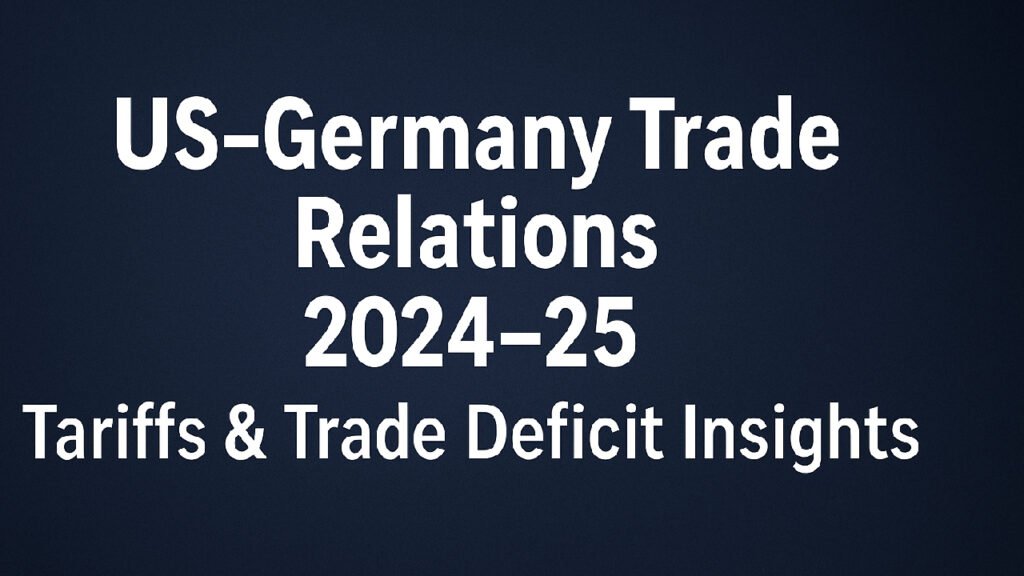The US–Germany trade relationship remains one of the most significant in global commerce. Both countries are leading industrial economies with deep trade and investment ties. In 2024, US imports from Germany were valued at $163.54 billion, while US exports to Germany reached $75.61 billion, according to trade data. This created a notable US–Germany trade deficit, highlighting the ongoing imbalance between the two economies.

Germany ranked as the 5th largest trading partner of the United States in 2024, with total bilateral trade amounting to $239.15 billion. For the first time since 2015, the U.S. became Germany’s top trading partner, reflecting strong demand for German products such as automobiles, machinery, and pharmaceuticals. However, recent policy changes have started to affect this long-standing trade relationship.
In 2025, the introduction of new US tariffs on Germany—particularly on steel, aluminum, and auto parts—has raised concerns among exporters. These measures aim to address the US–Germany trade imbalance but also risk disrupting global supply chains and increasing costs for American industries that rely on German-made components.
Despite the challenges, Germany’s exports to the USA continue to play a vital role in supporting its manufacturing economy. Meanwhile, U.S. companies are expanding their presence in Germany, especially in technology, energy, and financial services sectors, helping to balance investment flows between the two nations.
As both sides navigate shifting trade dynamics, the focus is increasingly turning toward collaboration in green technology, clean energy, and digital innovation. Strengthening cooperation and ensuring fair trade practices will be key to maintaining a stable US–Germany trade balance and fostering long-term economic growth.